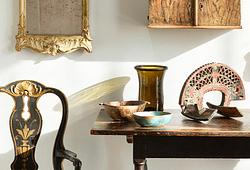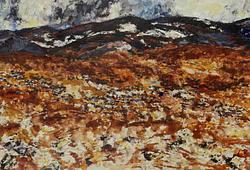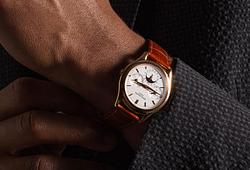Inge Schiöler
Boathouses
Signed Inge Schiöler and dated 1958. Canvas 19 x 23.5 cm.
Alkuperä - Provenienssi
Bukowski Auktioner, Stockholm, Modern Art + Design 632, May 2021, cat. no. 622.
Muut tiedot
Today, Gothenburg Colourism is synonymous with a handful of colourful, expressive artists, including Ragnar Sandberg, Ivan Ivarson, Åke Göransson and Inge Schiöler. Characteristic of the group is the sensual, almost passionate colouring, where colour is primary as an expressive medium. These are works of art closely linked to the salty cliffs and landscapes of the west coast, as well as to many international influences.
Inge Schiöler's life and painting are strongly integrated. He grew up in Strömstad, was educated at Slöjdskolan and was only 18 years old when he was accepted as a student at Valand in Gothenburg, where he studied under Tor Bjurström. His study trips took him to France and Spain, where he socialised with fellow artists such as Erling Ärlingsson, Karin Parrow and Ragnvald Magnusson. In 1931 he moved to Stockholm under the patronage of Gösta Olson at the Svensk-franska konstgalleriet. He rents a studio space on Urvädersgränd in Stockholm and comes into contact with artists such as Albin Amelin, Sven Erixson, Otte Sköld, Hilding Linnqvist, Gideon Börja and Bror Hjort. However, his stay in Stockholm was interrupted by Inge Schiöler's increasing mental illness, and in March 1933 his family arranged for him to return to Strömstad. Here he was given a studio in the town hall. But the young artist's mental health deteriorated and in October 1933 he was diagnosed with schizophrenia. He was hospitalised until 1960. For long periods he was completely apathetic and inactive, and when he did start painting again, it was on a small scale. However, during this period, his work was shown at various exhibitions and he became recognised. Gunnar Hjortén at Galleri God Konst in Gothenburg was responsible for exhibitions and sales, and thanks to his success, the family was able to build a house for Inge Schiöler on Syd-Koster in 1956, a house that was to play a decisive role in Schiöler's life.
Based on this house and its surroundings, Inge Schiöler developed his further artistic work. He found his motifs in nature and the surrounding landscape. The glittering bays, the flowers in the garden and the salt-splashed rocks constantly provided him with new ideas. The titles of the paintings show that he often used his motorboat in search of new motifs; South and North Hällsö, Öddö, Trollholmen, North Langö, Holmen Grå and North Koster are islands he visited. The colour intensity increases with striking and sometimes dominant elements of ultramarine, emerald green and violet. His work is intense, unplanned and spontaneous. He rarely uses an easel, but either props the canvas against something or lays it directly on the ground. Often several images were created from a single boat trip. He stretched ropes across the canvas to hang them to dry and several of them were literally sprinkled with salt during the journey home in rough weather. He didn't hesitate when making his paintings and he never changed his paintings afterwards. If he wasn't satisfied, ‘he could redo the subject another time,’ wrote a friend.
The work in the auction is a tribute to the nature that meant so much to Schiöler and very representative of his work from the 1960s. In intense, singing tones of colour, he creates a lush and evocative world beyond time and space. Summer pictures dominate his production; he needed light and warmth as a stimulus, which the works in the auction convey well. The exhibition catalogue from the Göteborgs konstmuseum in 1972 describes these characteristic features with the words:
‘The coastal pictures around 1950 had had a colouring of restrained intensity. Gradually, the strength of colour in the oil paintings increased. In the 1960s, the effect of the pure colours is increased to a level that seems almost fluorescent. Despite the improbably high luminosity of the colours, his colouristic magic makes us believe in the landscapes: the waves wandering towards the shore, the wind playing in the grass, the light igniting all the colour hidden in the rocks and cliffs. With his dancing, free brush rhythm, he drives forward the movement in the landscape' (Exhibition catalogue “Inge Schiöler”, Göteborgs konstmuseum, 6 May-27 August 1972, page 4)




































